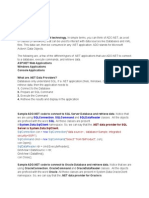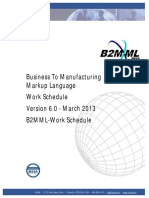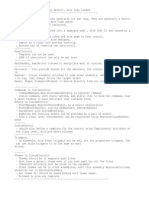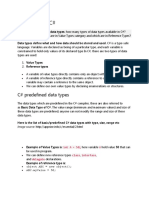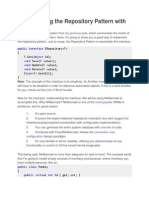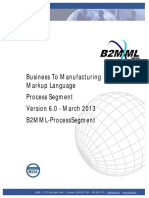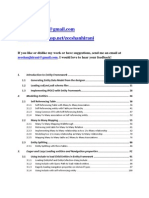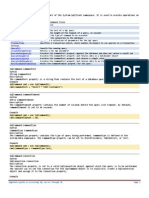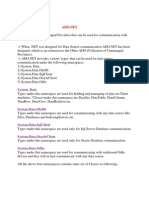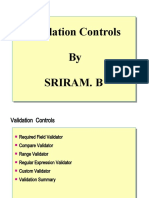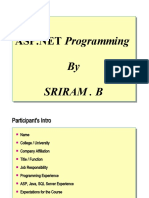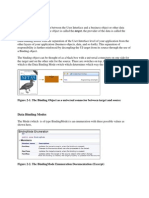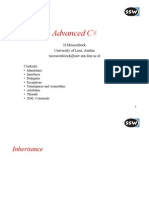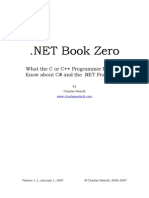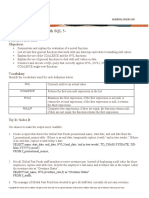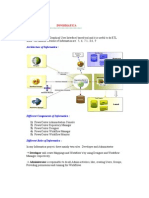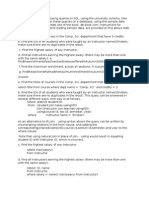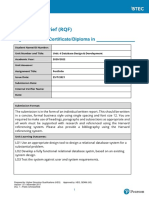0% found this document useful (0 votes)
320 views111 pagesModule 13
This document provides an overview of ADO.NET 2.0 including its objectives, architecture, key components like the connection, command, and data adapter objects, and new features. It introduces ADO.NET and compares it to ADO, outlines the ADO.NET architecture and data provider/consumer model, and describes objects like the connection, command, data reader, and dataset. It also provides examples of using the command object to execute scalar queries, readers, and nonqueries.
Uploaded by
api-19796528Copyright
© Attribution Non-Commercial (BY-NC)
We take content rights seriously. If you suspect this is your content, claim it here.
Available Formats
Download as PPT, PDF, TXT or read online on Scribd
0% found this document useful (0 votes)
320 views111 pagesModule 13
This document provides an overview of ADO.NET 2.0 including its objectives, architecture, key components like the connection, command, and data adapter objects, and new features. It introduces ADO.NET and compares it to ADO, outlines the ADO.NET architecture and data provider/consumer model, and describes objects like the connection, command, data reader, and dataset. It also provides examples of using the command object to execute scalar queries, readers, and nonqueries.
Uploaded by
api-19796528Copyright
© Attribution Non-Commercial (BY-NC)
We take content rights seriously. If you suspect this is your content, claim it here.
Available Formats
Download as PPT, PDF, TXT or read online on Scribd
/ 111

